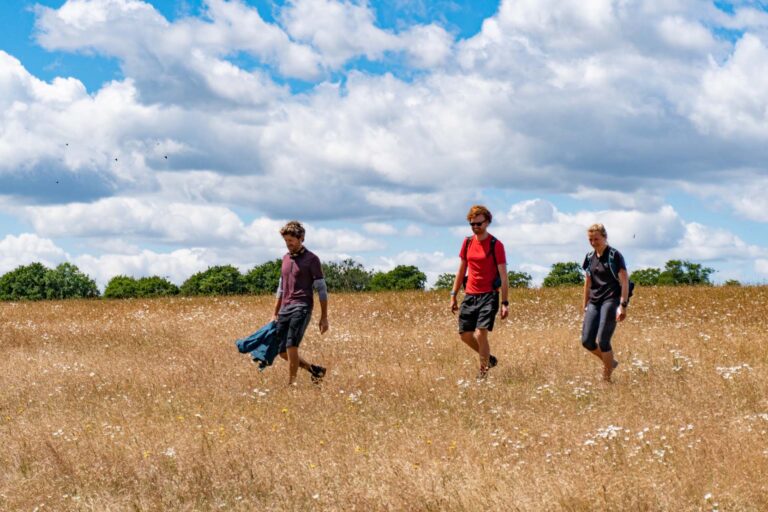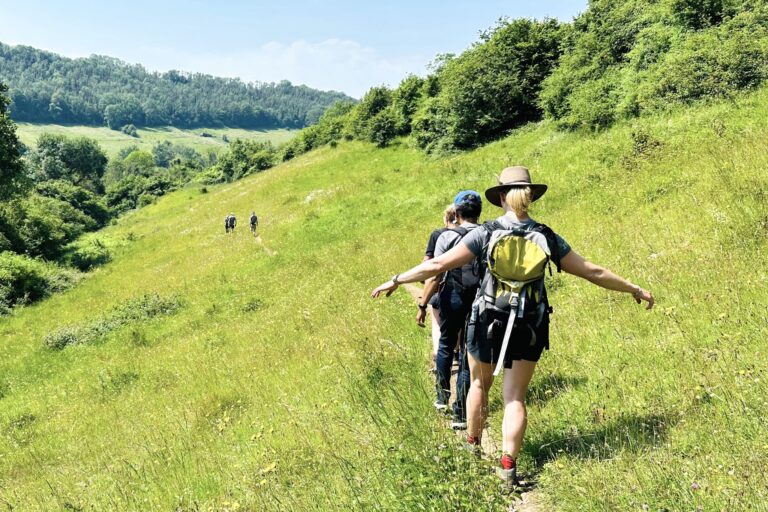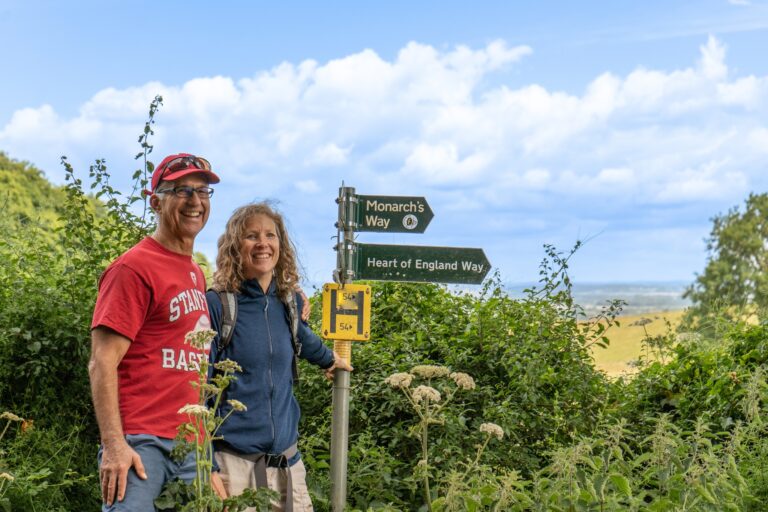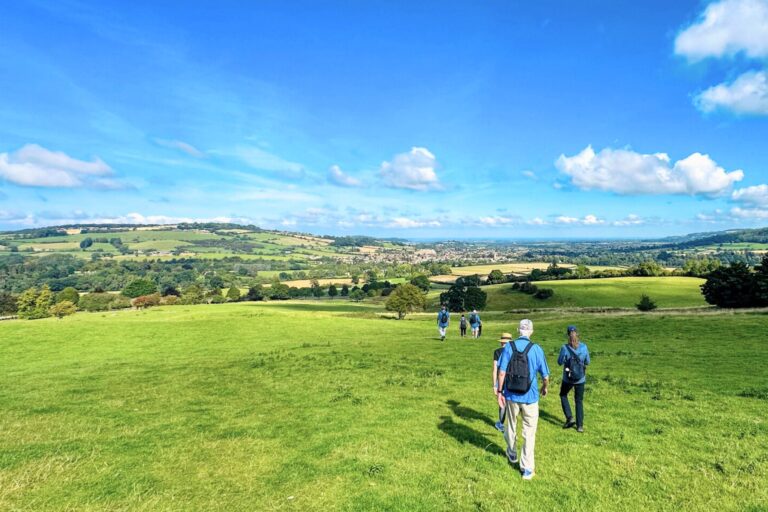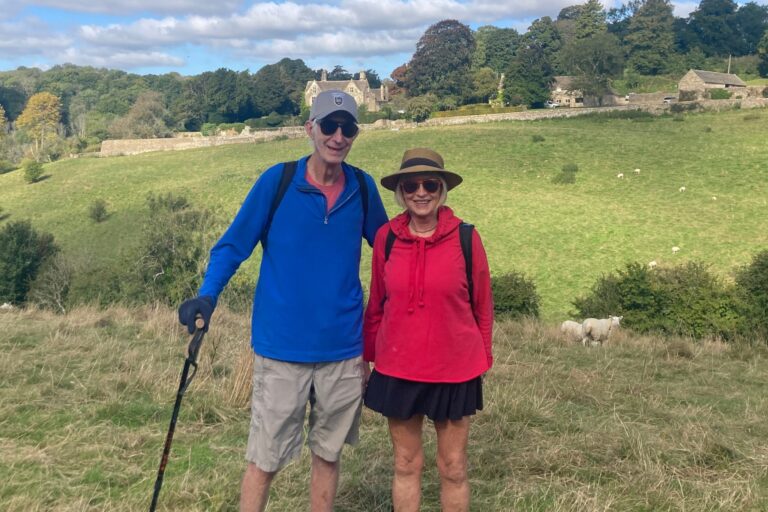March 5, 2025
8 mins
Destination: Cotswolds
Share
In this article
Best Parts of The Cotswold Way: A Walker’s Guide
The Cotswold Way, stretching 102 miles from Chipping Campden to Bath, is a long-distance trail offering picturesque villages, rolling hills, and ancient landmarks. Perfect for history buffs, nature enthusiasts, and those seeking an immersive countryside experience. It is simply one of the best quintessentially English adventures.
While every mile is a joy for nature lovers, some sections stand out for their charm, scenery, and historical significance. If you don’t have the time or energy to walk all 102 miles, fear not! There are plenty of manageable sections along the trail that allow you to experience walking part of the Cotswold Way. We’ve put together this handy guide highlighting the best parts of the Cotswold Way.
Cotswold Way Fact File:
- Location: Runs through the Cotswolds Area of Outstanding Natural Beauty (AONB) in southwest England.
- Start Point: Chipping Campden, a picturesque market town.
- End Point: Bath, a UNESCO World Heritage city.
- Distance: 102 miles (164 km).
- Trail Type: National Trail, well-marked with acorn symbols.
- Terrain: A mix of rolling hills, woodlands, open fields, and limestone escarpments.
- Highest Point: Cleeve Hill (330 m / 1,083 ft).
- Time to Complete: Typically 7–10 days, depending on pace and stops.
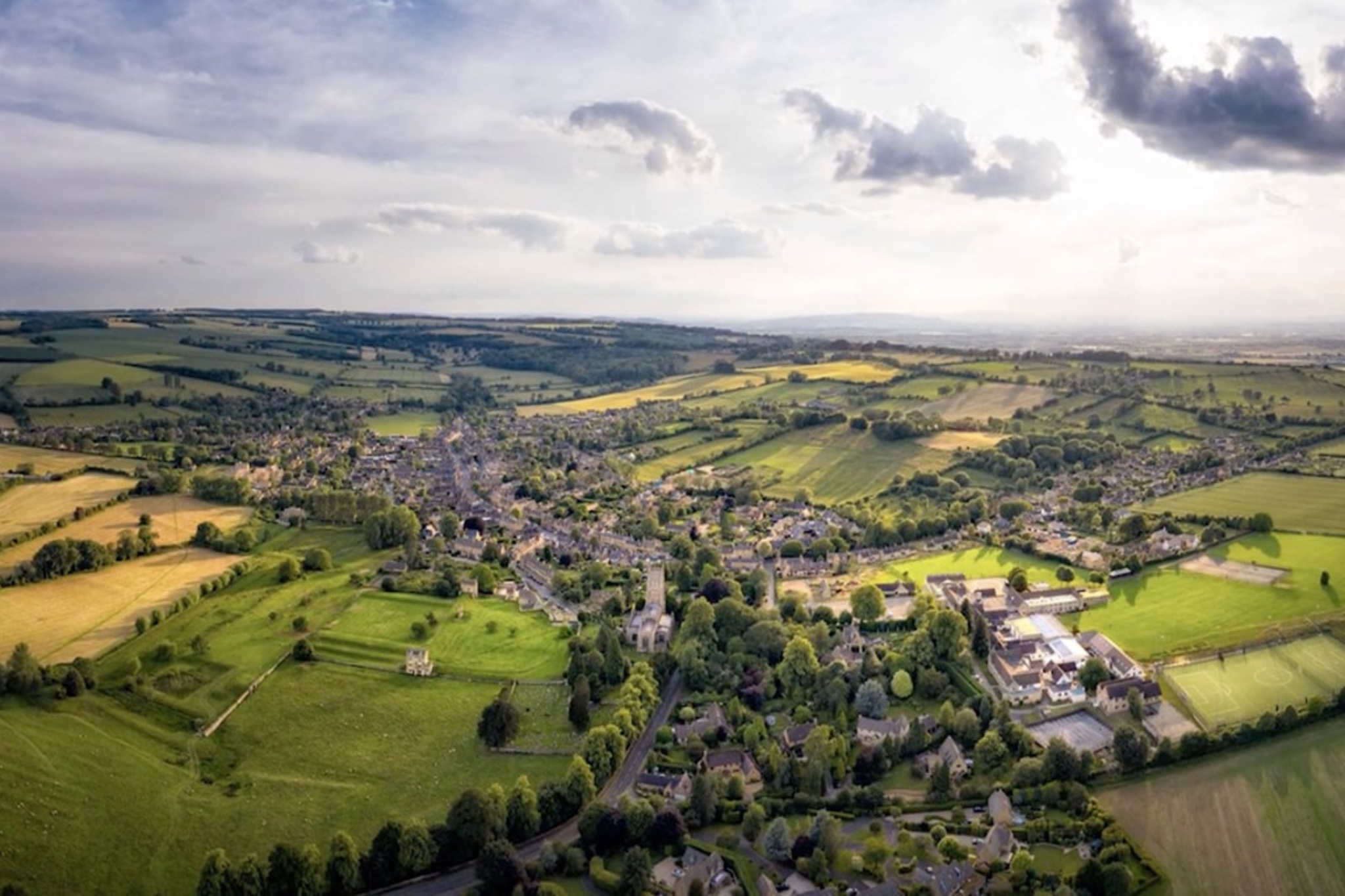
Best parts of the Cotswold Way: 5 Routes to walk
1. Chipping Campden to Broadway Tower
Distance: 6 miles
Begin in Chipping Campden, a charming village with honey-colored stone buildings and a rich history.
Pass through Dover’s Hill, offering panoramic views that are more than Instagram-worthy! End at Broadway Tower, a striking folly with far-reaching views of 16 counties on clear days.
This route captures the essence of the Cotswolds, with a blend of history, architecture, and nature.
Active England’s path less trodden: A slight deviation from the main trail leads to Ebrington Hill, one of the highest points in the area. Visit Ebrington village, home to the award-winning Ebrington Arms, a cozy pub perfect for a mid-walk pint.
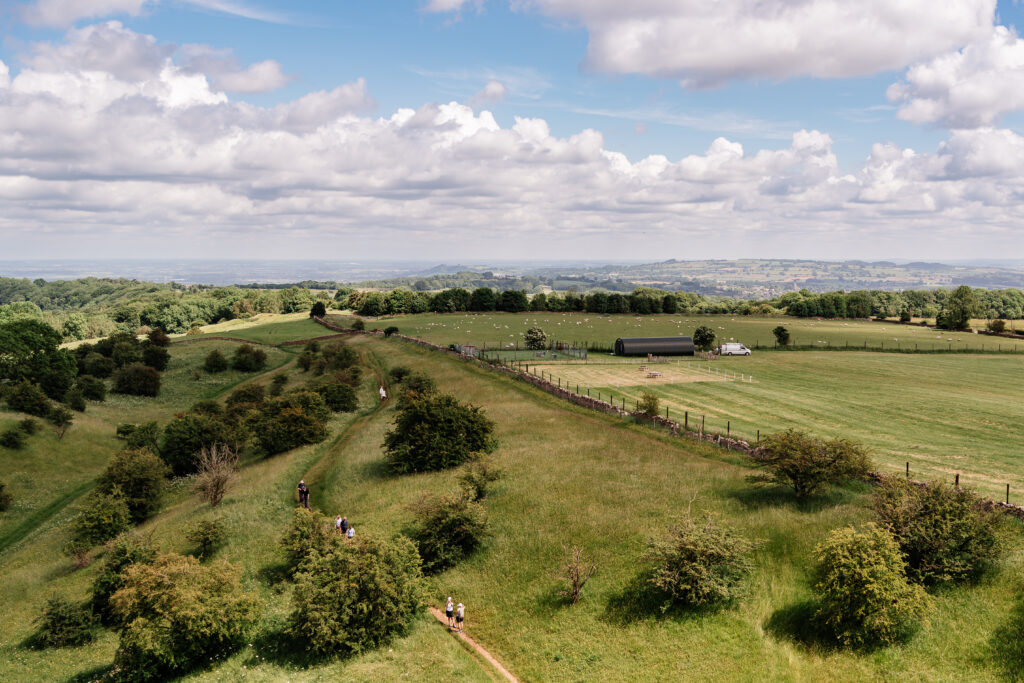
2. Winchcombe to Belas Knap Long Barrow
Distance: 5 miles
Explore Winchcombe, often called the “Walking Capital of the Cotswolds.”
Visit Belas Knap, an ancient Neolithic long barrow with a false entrance and side chambers. It’s situated on Cleeve hill with eerie allure.
As you may expect, on a clear day this route offers spectacular countryside views over Cheltenham and beyond.
Ideal for history enthusiasts and those looking for a manageable day walk with classic Cotswold countryside appeal.
Active England’s path less trodden: Head south along the trail from Bela’s Knap, then veer off toward Spoonley Wood, following a less-travelled path through dense woodland.
In Spoonley Wood, discover the remains of a Roman villa, a hidden archaeological site with crumbling walls and mosaics, offering a glimpse into life in Roman Britain.
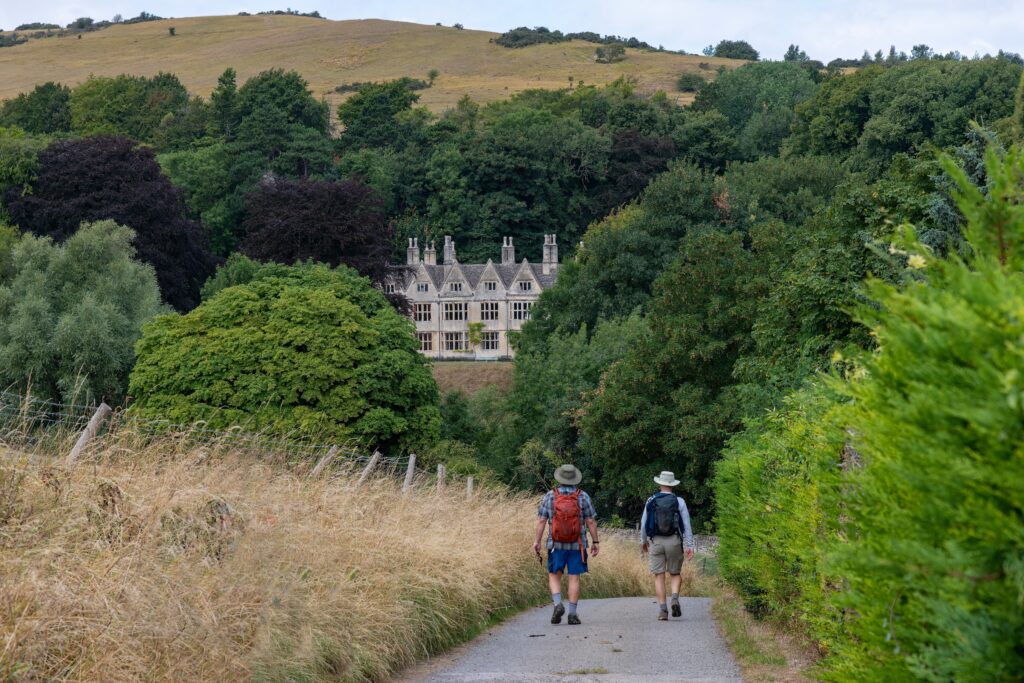
3. Cleeve Hill to Leckhampton Hill
Distance: 8 miles
Cleeve Hill is the highest point in Gloucestershire and is also the highest peak of the Cotswold Hills.
Views as mentioned above are some of the best of any walking route through the Cotswolds. It encapsulates every classic image you may have in your mind of Cotswold countryside, from rolling hills to sheep filled fields. If you can endure the inclines, you’ll be rewarded with the views.
In Spring and Summer, vibrant wildflowers in add bursts of colour to the route.
Devil’s Chimney is another quirky landmark on this route, in the form of a limestone rock formation near Leckhampton Hill.
Active England’s path less trodden: Beyond the Devil’s Chimney, hidden paths wind through Juniper Hill, offering alternative routes with quieter surroundings.
These paths lead to secluded benches with panoramic views over Cheltenham and beyond.
The area is also rich in wild juniper bushes, a rarity in England, adding to its charm.
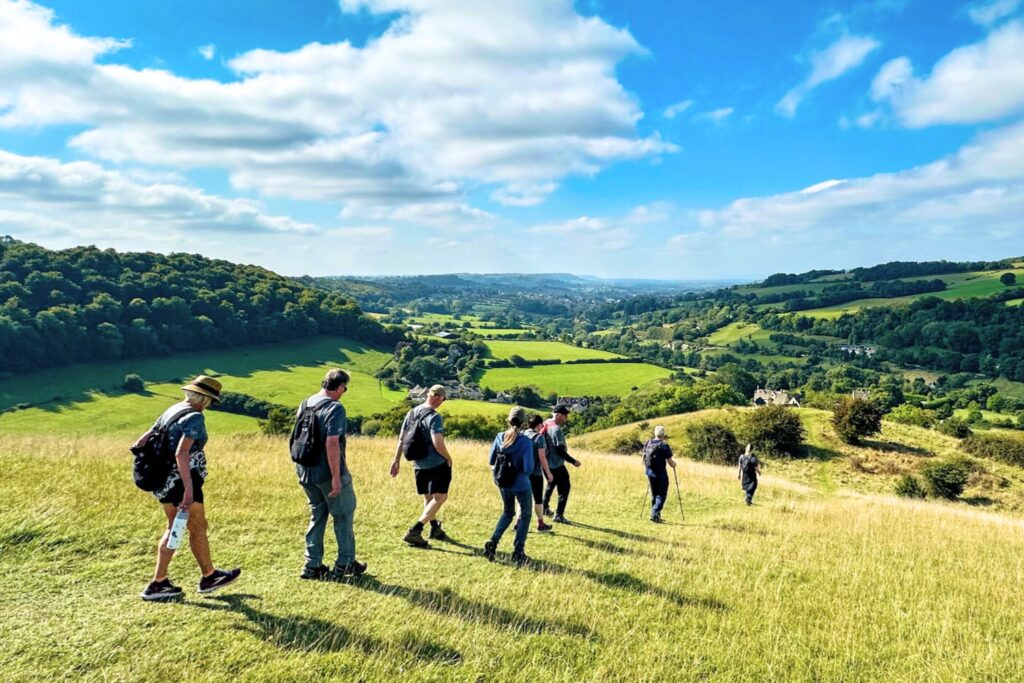
4. Painswick to King’s Stanley
Distance: 9 miles
Begin in Painswick, known as the “Queen of the Cotswolds,” with its pretty churchyard and yew trees. Meander through rural landscapes and hidden valleys.
Encounter ancient woodlands, quaint hamlets, and far-reaching views across the Severn Valley.
A quieter stretch, perfect for soaking in the tranquil beauty of the Cotswolds.
Active England’s path less trodden: Just south of Painswick, secret valleys such as the Tibbiwell Valley offer tranquil walking experiences away from the main trail. These lesser-used paths are rich in wildflowers in spring and feature babbling brooks and rustic bridges.
Following these paths will lead to charming villages such as the late author Laurie Lee’s home, Slad and his famous pub, The Woolpack.
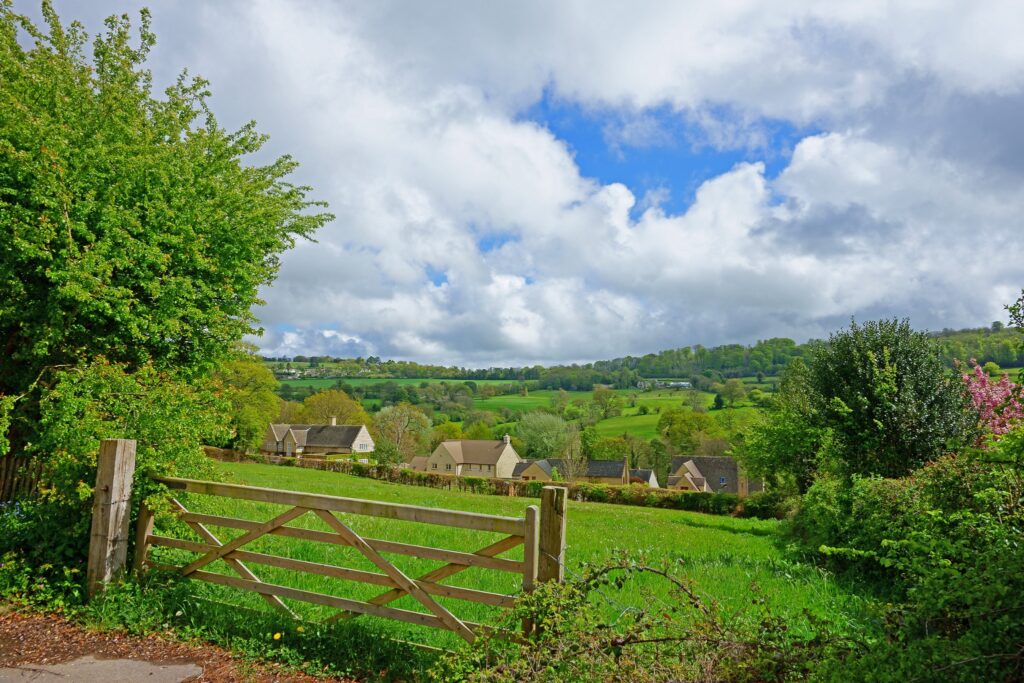
5. Cold Ashton to Bath
Distance: 10 miles
Wander through Cold Ashton, a peaceful village with historic Cotswold charm.
Cross the Avon Valley with sweeping countryside views and ancient battlefields and pause to absorb the natural beauty of England’s rural heart. The final descent into the historic city of Bath and you are greeted with the architectural splendour of the Crescent and Abbey as you then walk further into the heart of the city where this route and the overall Cotswold Way National Trail ends.
This final stretch provides a satisfying conclusion, blending countryside with urban history.
Active England’s path less trodden: Bannerdown Common is a quiet area of open fields and rare wildflower meadows near Cold Ashton.
You will come across paths near Bannerdown Common that intersect with historic tracks used for centuries, including old Roman routes.
It’s a perfect spot for a peaceful pause before continuing toward Bath.

Whether you’re planning a day trip or tackling the full trail, these sections showcase the best the Cotswold Way has to offer.
Of course there are many picturesque B&Bs and pubs that line the trail, ideal for rest refueling after a day’s walking.
If this blog has given you the appetite to conquer the Cotswold Way Trail, have a look at our 8-day, 10-day and 12-day Self-Guided walking tour options.
Have you walked part or all of the route? Let us know your highlights in the comments below.
Happy walking!

